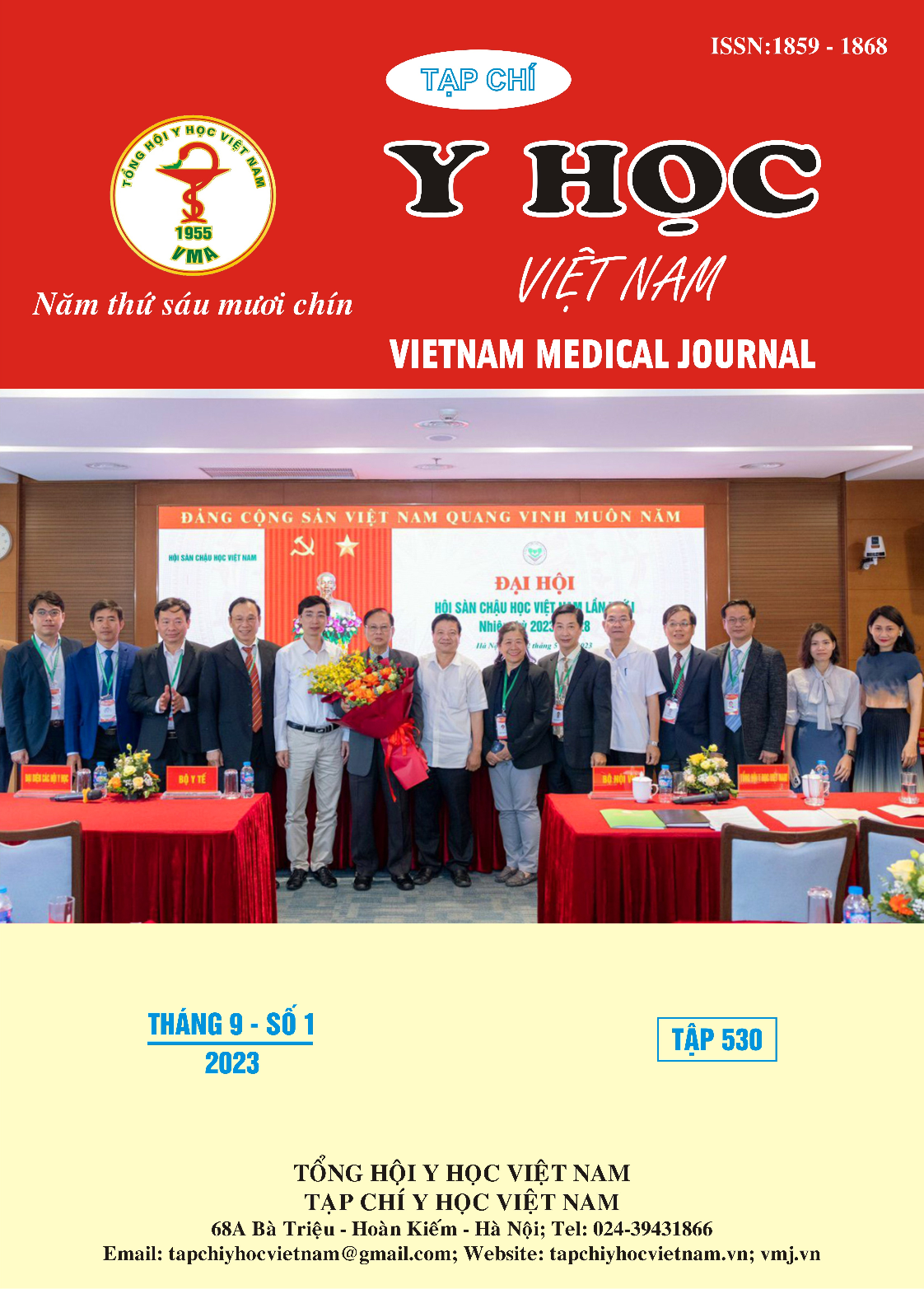PHÂN LOẠI MÔ BỆNH HỌC CỦA U BÓNG VATER THEO TỔ CHỨC Y TẾ THẾ GIỚI 2019
Nội dung chính của bài viết
Tóm tắt
Đặt vấn đề: Trong phiên bản mới nhất của Tổ chức Y tế Thế giới 2019 đã có nhiều thay đổi về thuật ngữ, phân loại cũng như chẩn đoán u bóng Vater so với các phiên bản trước đây. Việc phân nhóm mô bệnh học giúp cung cấp những thông tin tiên lượng quan trọng, vạch ra các chiến lược điều trị phù hợp và tối ưu cho người bệnh bởi có sự khác biệt trong định hướng điều trị và tiên lượng cho bệnh nhân trong các loại u khác nhau ở vùng bóng Vater. Mục tiêu: Khảo sát một số đặc điểm tuổi, giới, mô bệnh học và phân loại u bóng Vater theo Tổ chức Y tế Thế giới 2019. Đối tượng – phương pháp nghiên cứu: Phương pháp nghiên cứu báo cáo loạt ca trên 78 trường hợp u bóng Vater được phẫu thuật tại bệnh viện Đại học Y Dược Thành phố Hồ Chí Minh từ tháng 01/2019 đến tháng 11/2022. Kết quả: Nhóm u biểu mô ác tính chiếm phần lớn với tỷ lệ là 94,9%, chủ yếu là 3 dạng mô học: ung thư biểu mô tuyến típ ruột (35,9%), ung thư biểu mô tuyến típ mật tụy (28,2%) và ung thư biểu mô tuyến típ hỗn hợp (26,9%). Ngoài ra, tỷ lệ ung thư biểu mô tuyến dạng nhầy và ung thư biểu mô tế bào liên kết kém lần lượt là 1,3% và 2,6%. Nhóm u biểu mô lành tính và tổn thương tiền ung thư cũng như nhóm tân sinh thần kinh nội tiết chỉ chiếm một tỷ lệ nhỏ lần lượt là 3,8% và 1,3%. Tuổi trung bình của bệnh nhân là 59 tuổi với tỷ số nam:nữ là 1:1,1. Kích thước u trung bình 2,1cm, thường gặp trong khoảng 1-<2 cm (48,7%). Dạng đại thể thường gặp là dạng khối sùi (52,6%). Mức độ biệt hóa vừa chiếm chủ yếu trong các u ác tính (86,5%). Một số đặc điểm mô học khác trong nhóm u ác bao gồm tỷ lệ xâm nhập mạch máu, xâm nhập quanh thần kinh, hoại tử u, chất nhầy trong mô đệm, lần lượt là 9,3%, 13,3%, 32% và 17,3%. Kết luận: Nghiên cứu cho thấy các đặc điểm tuổi, giới, mô bệnh học và mối liên quan giữa chúng. Từ đó giúp cho việc chẩn đoán đúng và phân loại chính xác u bóng Vater; giúp hỗ trợ cho lâm sàng trong các quyết định điều trị và tiên lượng sống của bệnh nhân một tốt hơn.
Chi tiết bài viết
Từ khóa
: u bóng Vater, ung thư biểu mô bóng Vater, các típ mô bệnh học
Tài liệu tham khảo
2. Nagtegaal ID, Odze RD, Klimstra D, et al. The 2019 WHO classification of tumours of the digestive system. Histopathology. Jan 2020;76(2):182-188. doi:10.1111/his.13975
3. Adsay V, Ohike N, Tajiri T, et al. Ampullary region carcinomas: definition and site specific classification with delineation of four clinicopathologically and prognostically distinct subsets in an analysis of 249 cases. The American journal of surgical pathology. Nov 2012;36(11):1592-608. doi:10.1097/PAS.0b013e31826399d8
4. Carter JT, Grenert JP, Rubenstein L, Stewart L, Way LW. Tumors of the Ampulla of Vater: Histopathologic Classification and Predictors of Survival. Journal of the American College of Surgeons. 2008/08/01/ 2008;207(2):210-218. doi: https://doi.org/10.1016/j.jamcollsurg.2008.01.028
5. Winter JM, Cameron JL, Olino K, et al. Clinicopathologic Analysis of Ampullary Neoplasms in 450 Patients: Implications for Surgical Strategy and Long-Term Prognosis. Journal of Gastrointestinal Surgery. 2010/02/01 2010; 14(2):379-387. doi:10.1007/s11605-009-1080-7
6. Ang DC, Shia J, Tang LH, Katabi N, Klimstra DS. The Utility of Immunohistochemistry in Subtyping Adenocarcinoma of the Ampulla of Vater. 2014;38(10):1371-1379. doi:10.1097/ pas.0000000000000230
7. Matli VVK, Wellman G, Jaganmohan S, Koticha K. Ampullary and Pancreatic Neuroendocrine Tumors: A Series of Cases and Review of the Literature. Cureus. 2022/1/27 2022;14(1):e21657. doi:10.7759/cureus.21657
8. Ruff SM, Deutsch GB, Weiss MJ, Deperalta D. Ampullary neuroendocrine tumors: A window into a rare tumor using a national database. 2021;39(3_suppl):373-373. doi:10.1200/JCO.2021.39.3_suppl.373
9. Duan K, Mete O. Algorithmic approach to neuroendocrine tumors in targeted biopsies: Practical applications of immunohistochemical markers. 2016;124(12):871-884. doi:https:// doi.org/10.1002/cncy.21765
10. Kim WS, Choi DW, Choi SH, Heo JS, You DD, Lee HG. Clinical significance of pathologic subtype in curatively resected ampulla of vater cancer. 2012;105(3):266-272. doi:https:// doi.org/10.1002/jso.22090


